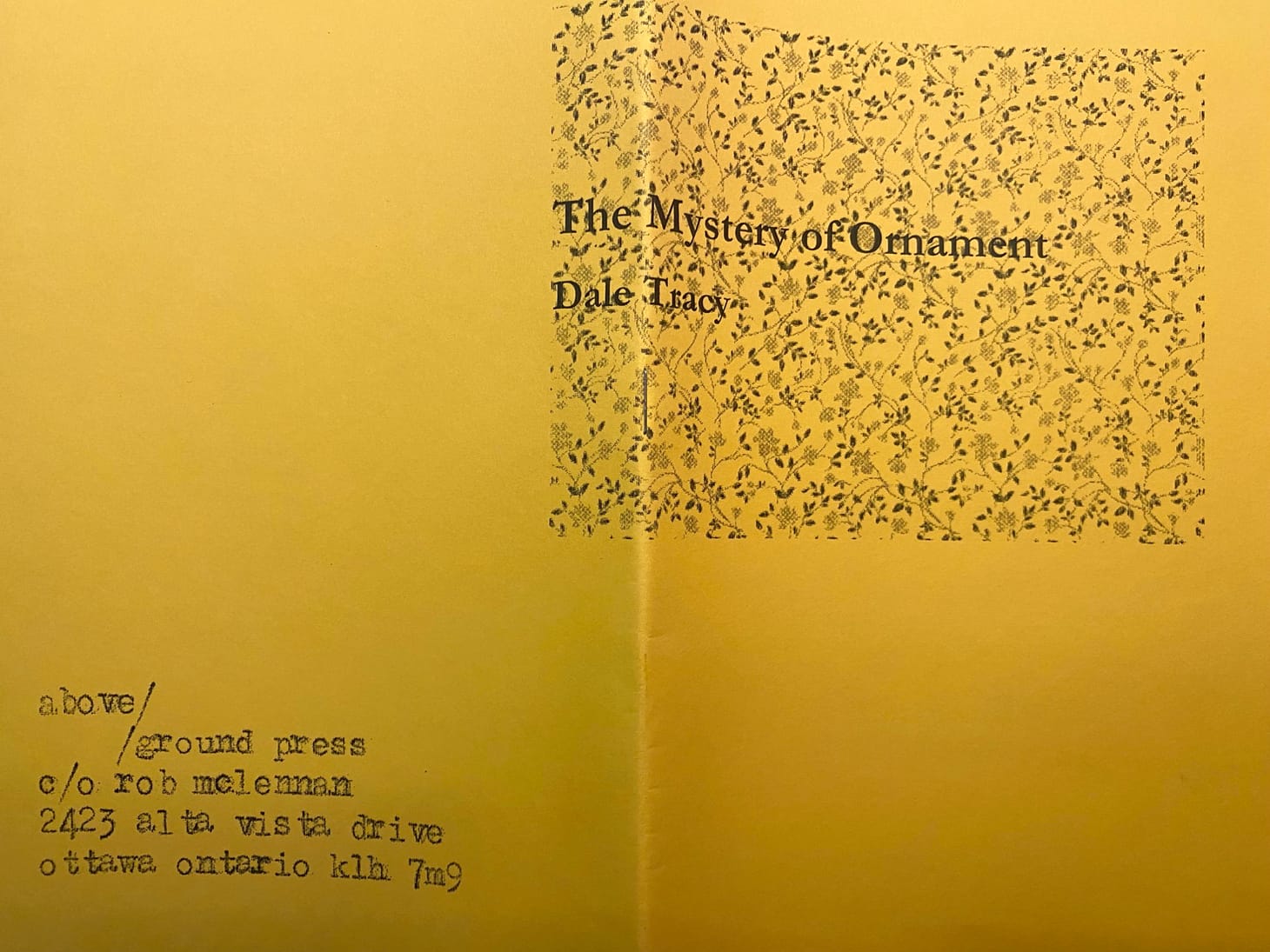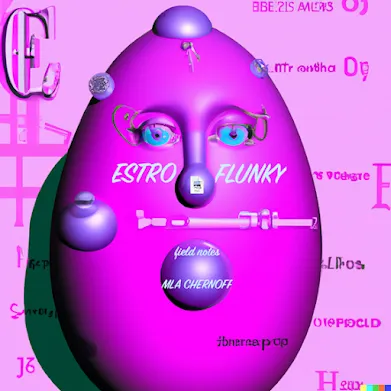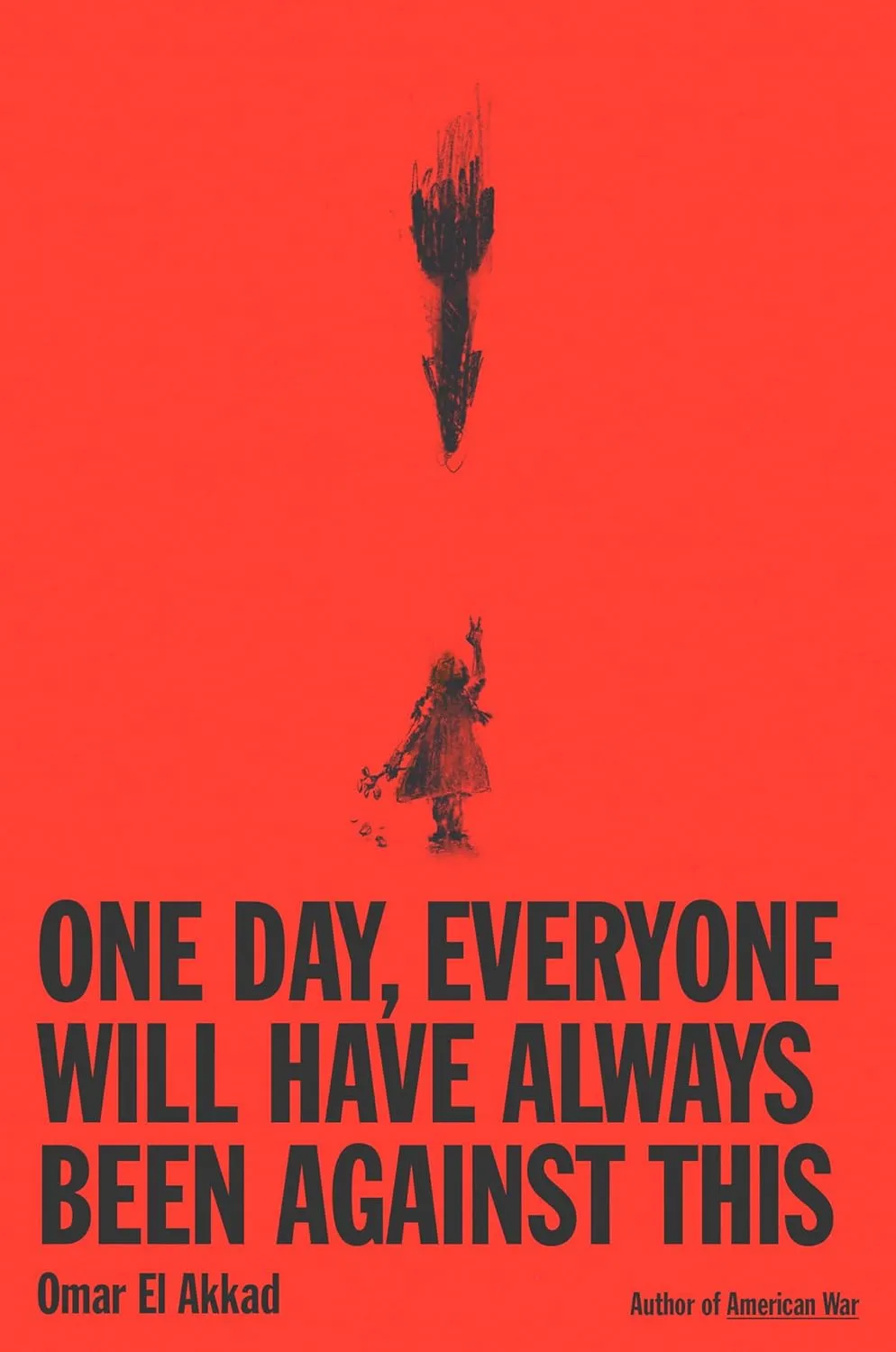Dale Tracy, The Mystery of Ornament
Dale Tracy is a mastermind of storytelling, daring, and it’s honestly just a really fun, brief read.

Buta, or boteh (the transliteration I prefer), is defined by Wiktionary as “the droplet-shaped motif on which paisley patterns are based” and though this is my first time encountering this word, I get the sense there’s no way the classification of what it encompasses could be so sparing.
But that’s seemingly where Dale Tracy has gotten her title for this 2020 above/ground chapbook from, The Mystery of Ornament.
Skipping to the acknowledgements section first before describing the cover and analyzing the first poem, which is quickly becoming a habit of mine, we read:
Thanks to Allison Chisholm for presenting me with a booklet of blank pages and the instruction to write a chapbook. Thanks to our writing group for making handmade prompts our occasion for being together. Thanks to Stuart Ross for his generosity and keen editorial eye. Thanks to rob mclennan for making space for so much poetry.
A booklet of blank pages was how this book started, isn’t that incredible? It could have become anything and now I am actively reeling my mind back in before going off the deep end into a rabbit hole and subsequent tangent about Persian carpets. Let’s see what Dale Tracy has to say about them tonight instead.
The cover shows a pixelated motif, of flowers entwined between rows of buteh, or bending in such ways as to suggest the presence of buteh without necessarily explicitly showing in appearance. It’s subtle.
I may or may not have consulted another printed source, or three, on this already, but I will spare my tangent for another part of the review, if not another altogether!
The Design
The plan: exchange a false chintz for the paisley pattern.
They’ll steal its basis in the buta, the “Kashmir cone,”
a motif of tears out of harmony with production’s speed.
There is no excrescence in art—design extracted
advantages new owners, not ornament.
The black market takes textiles
with the numbers filed off.
They will steal the general idea,
the individual expression,
the fabric, the dyes,
the elegant suggestion.
They will unweave.
So this might explain the absent motif on the cover.
By the middle of the manuscript, Tracy has nearly hit her full stride in a pair of ghazals that are as refreshing as they are committed to the theme of the chap.
I may have mentioned ghazals being very much in vogue earlier this month. It’s hard not to get sick of how overdone the form can be. Some poets try to do spin-off forms, inspired forms, etc., but even reading something about John Thompson’s Stilt Jack earlier today made me roll my eyes hearing for the umpteenth time of Canadian poets doing the ghazal. Honestly, I blame Canadians, not Thompson so much, but as a Canadian reader (or as someone who has studied four Middle Eastern languages perhaps), I still enjoy attention to the form, style, history and potent and often untapped valency of the ghazal.
So to recapitulate, Dale Tracy does ghazals justice. She respects the repetition the form yearns for, with an AA/BA/CA/DA/EA rhyme scheme in each. The two make a formidable pair.
But that’s the best part, it’s not the end of the work, it’s the middle, and she’s still getting warmed up.
A Ghazal Leaves a Clue
Every plan frays at the edges, leaves a clue.
You can never know then who leaves a clue.
Handicraft sews fingerprints in—poems too.
Facts in delight do not accrue but it leaves a clue.
Gold threads flowers’ stalks, the mania of growth.
Spring is here: against the blue, the leaves, a clue.
A statue gleams against the square of heated stones.
Sun in the market, but birds flew; shadow leaves a clue.
The one who looks and weaves is seen and caught.
D.A.T. Detective Agency, it’s true, leaves a clue.
I say getting warmed up and by that I misconstrue: Dale Tracy, in her trademark experimenting, has also woven us into a narrative about the rug in question in a way achieving a level of nearly indetectable homage to Richard Brautigan’s Trout Fishing in America, it feels like, or what Krakovian poet Zenon Fajfer might refer to as liberature, or works of literature that interface directly with the medium and printed forms they appear on.
I have only enough time to either excerpt one more poem or exegete. I think I must defer to Dale Tracy on this and print the final one, spoiler alert:
Return to Sender
Forced to return the stolen loot,
Martha remembers sailing wings, and thinks.
Air lacks pattern like visible waves.
To make a mark but no trail, take to the sky.
The cousins wrap the Kashmir shawls.
The shipping clerk inks the parcel “Air Mail.”
In the pause before the cousins gasp in unison,
Martha’s mind stamps signature designs.
It’s a really cool chapbook and I highly encourage you reach out to rob mclennan to specifically request a copy while you still can if any of this scratches that itch for you. Dale Tracy is a mastermind of storytelling, daring, and it’s honestly just a really fun, brief read.
If you’re down to read a chapbook, I can’t think of anything else at the moment I’d rather recommend. I can’t wait to read more Dale Tracy.
Bibelotages Newsletter
Join the newsletter to receive the latest updates in your inbox.



